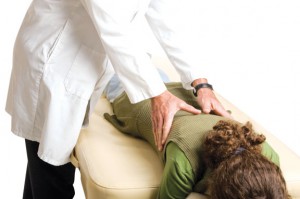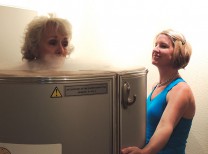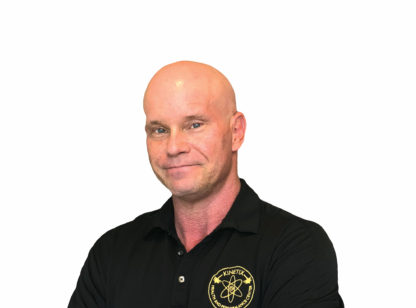 Resiliency, the ability to move and adapt to our changing world, is what keeps us alive. This same quality is also what keeps us young. On the surface we look for resiliency in our skin as a sign of youth, but that resiliency is even more important in our organs and our joints.
Resiliency, the ability to move and adapt to our changing world, is what keeps us alive. This same quality is also what keeps us young. On the surface we look for resiliency in our skin as a sign of youth, but that resiliency is even more important in our organs and our joints.
Over time our bodies will change in chemistry and structure depending on how we use and abuse them. Resiliency (and flexibility) gives way to stiffness and hardening of the body with an increased toxic burden and limited movement. According to the research of Dr. Henry Winsor, you can tell the age of a person by the age of their spine. Upon studying 50 cadavers for association between fixated spinal segments and disease processes, he was able to find direct correlations in 49 cadavers. He also noted that the limitation in spinal movement preceded the associated disease processes.[sup]1[/sup] Adhesions in these spinal joints can form in as little as 8 weeks of decreased segmental motion according to a study in JMPT September 2010.[sup]2[/sup]
The mechanism for this is clear when you consider the continual process of fibrous connective tissue being produced by interstitial cells as discussed in most physiology textbooks. These fibers will build up in the absence of movement. Just ask anyone who has worn a cast. With daily segmental movement the unnecessary fibers break away, but the remaining fibers continue to build up and support or restrict in those other areas. Without movement, this fusion will happen over a joint or any tissue.
Movement is Life in so many ways. Exercise is not only for weight loss or to play a sport. Everyone needs to move to keep their joints healthy, to move the fluids around in their body, and to keep their nervous system talking. Daily stretching, and aerobic and anaerobic exercise, are all important and will effect global and generalized movement. If you find an imbalance from side to side or front to back in your flexibility or limitation of movement, your body may be compensating for the build up of adhesions at segmentally-limited areas. To avoid this, and to release the adhesions once they have started, it is a good idea to get another perspective.
Massage and Chiropractic are methods of moving the tissues and joints of the body in ways we just can’t do by ourselves. A skilled massage therapist can break up scar tissue that binds layers of connective tissue. Once adhesions are broken, shortened muscles can be elongated and muscle fibers separated. Broad strokes will flush these areas to move toxic debris away and encourage fresh blood to enter.
A skilled doctor of chiropractic may apply specific adjustments to bones that have limited joint movement (which gives altered nerve information to the brain and associated tissues). Healthy joint function is especially important in the spine where the nerves go out to every part of the body. Healthy joint movement allows for balanced muscle movement and better communication in all the body systems. Your chiropractic doctor may recommend lifestyle changes to enhance your results. And in the event your symptoms are caused by something more serious, your chiropractor can diagnose and refer you to other health care providers as needed.
Considering these latest theories in disease and aging, it is important to get your spine checked out periodically by a licensed professional, and to stay active with daily movements and exercise.
Jessica Blaisdell is a State Certified Massage Therapist in the Coachella Valley and can be reached at 760-401-1077. Dr. Robert W. Haberkorn D.C., MMQ (Master of Medical QiGong) has practiced for over 20 years locally and offers health talks and classes for various organizations. Haberkorn Health Center (760) 346-9400.
References: 1)Sympathetic Segmental Disturbances The Evidences of the Association, in Dissected Cadavers, of Visceral Disease with Vertebral Deformities of the Same Sympathetic Segments Medical Times, November 1921, pp. 1-7; 2) Journal of Manipulative and Physiological Therapeutics Volume 33, Issue 7 , Pages 508-518, September 2010 Zygapophyseal Joint Adhesions After Induced Hypomobility













































Comments (0)